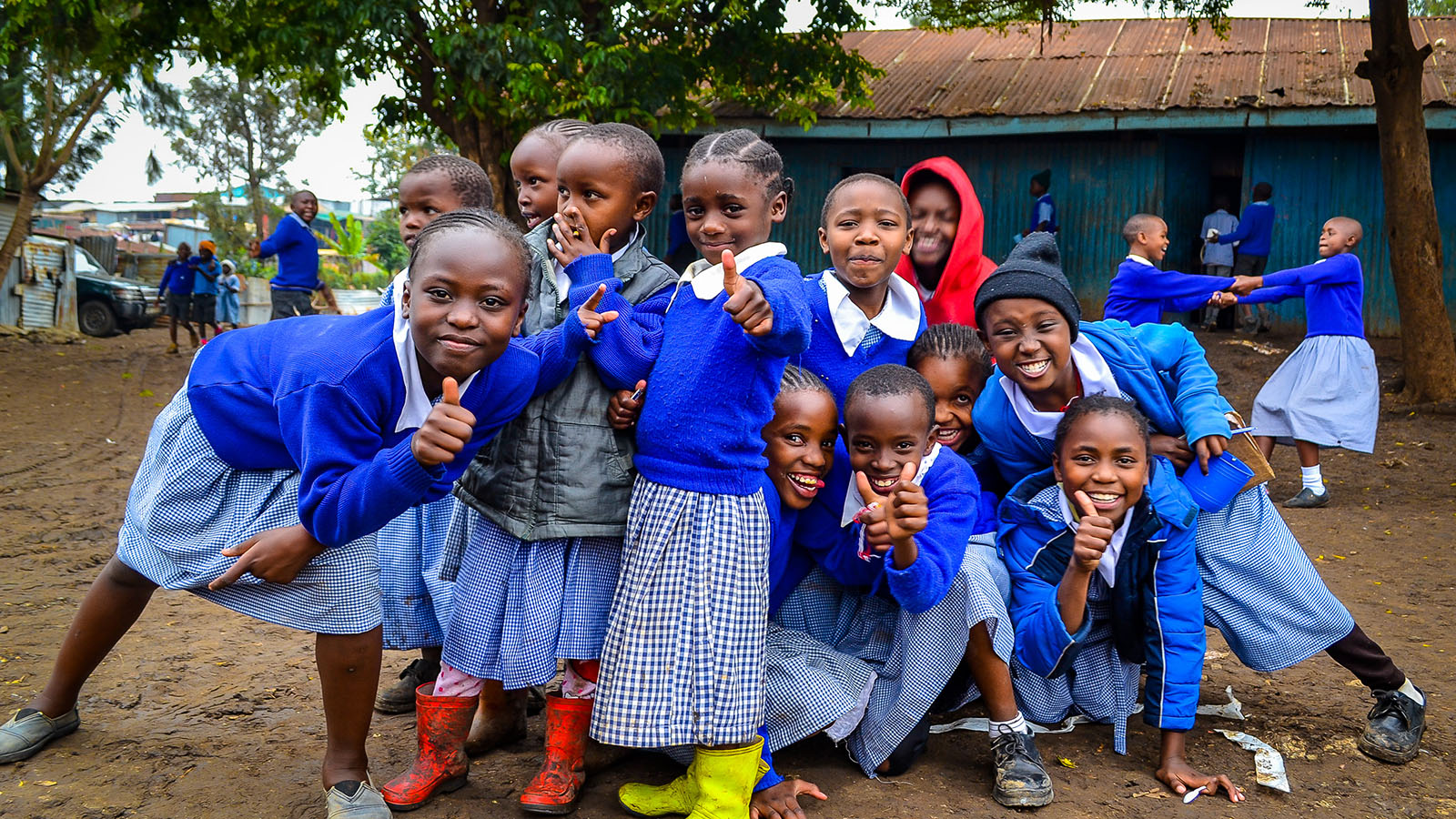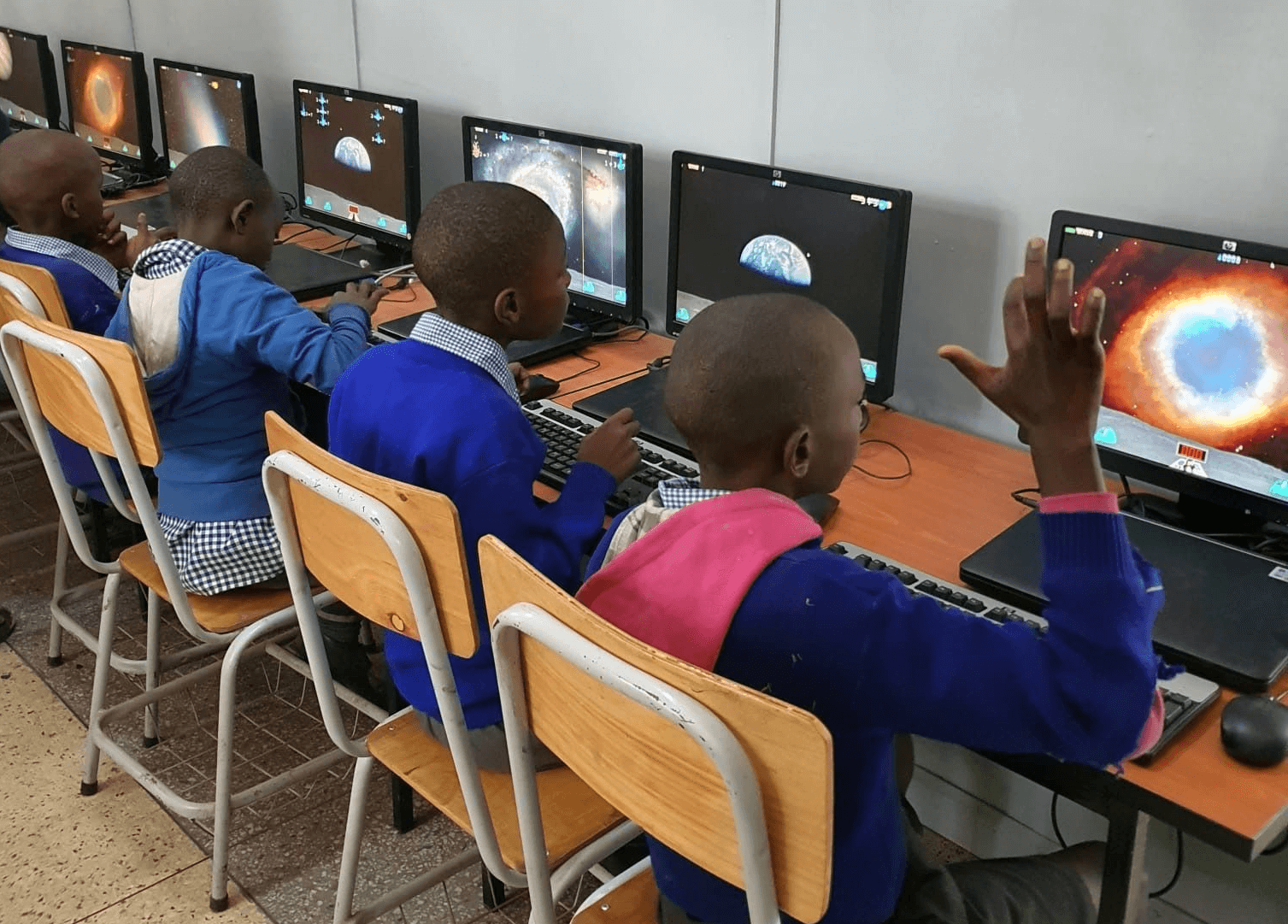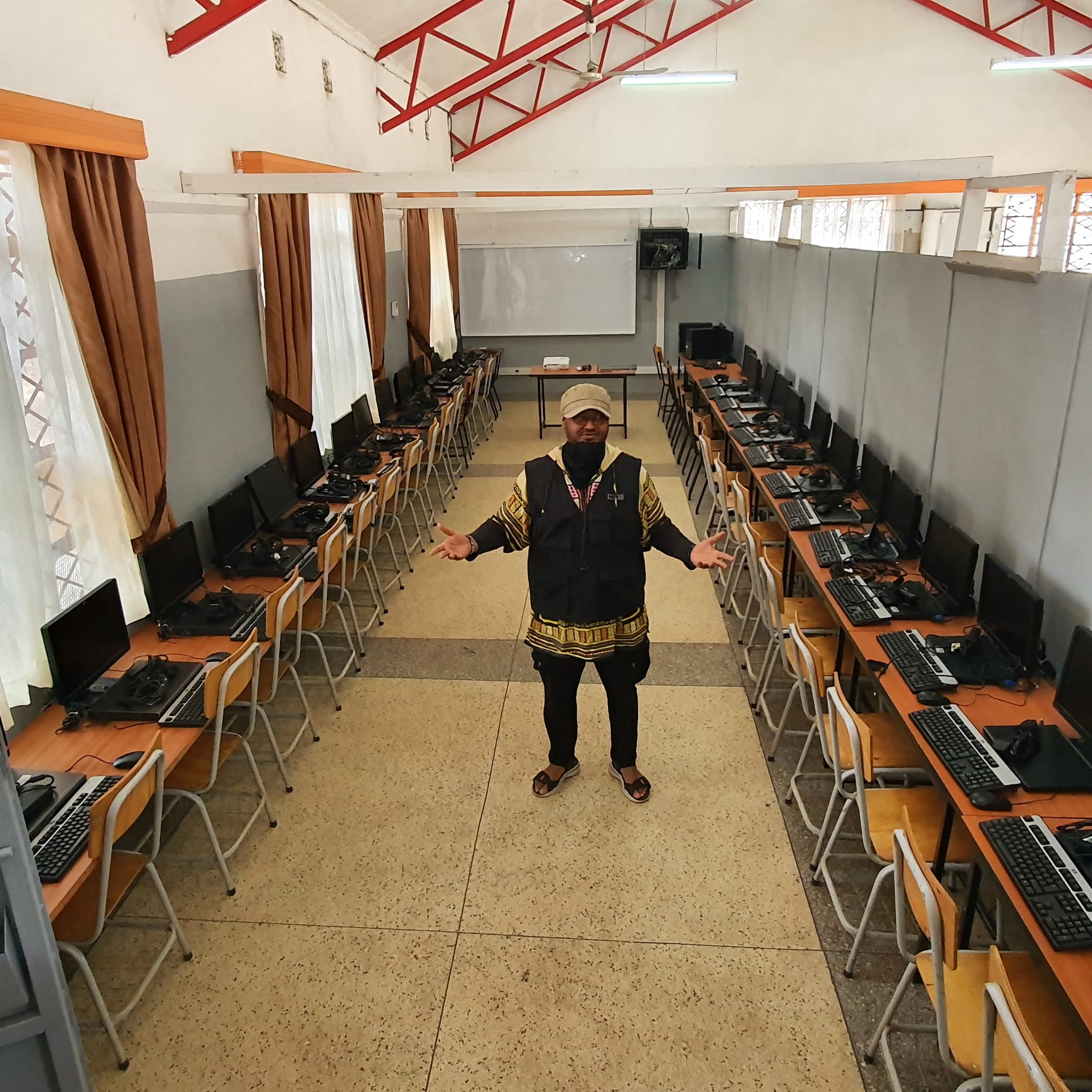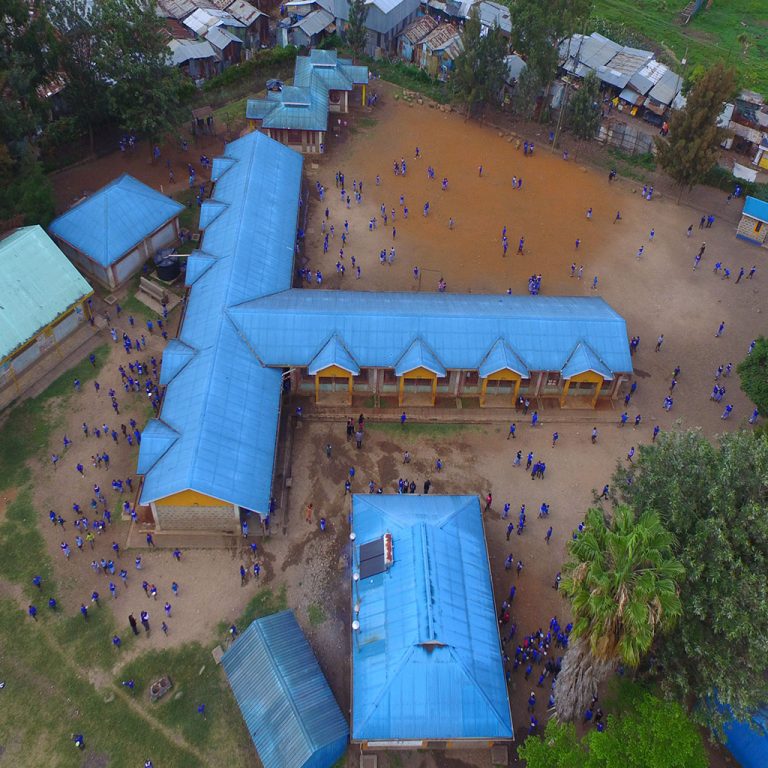POSTED ON 15 SEP 2023
READING TIME: 5 MINUTES
Delivering a new computer lab for Gatoto
One of the best ways to break down educational barriers for children from disadvantaged communities is to provide access to technology. It allows them to pursue online learning, bridge the digital divide and gain essential computer literacy.
One of our community outreach missions is to support education through technology, which inspired us to provide a computer lab for the Gatoto school in the Mukuru slum in Nairobi, Kenya. Our association with the school began over a decade ago when our CEO Philip Sharpe visited it as part of a project with Camara.

The school was established in 1994 by Betty Nyagoha to provide much-needed access to education for local children, starting out with 370 pupils in a single building. Sadly, Betty passed away in 2021 but the school has now grown to almost 1200 pupils. Betty’s focus on educational excellence led the school to produce doctors, engineers and lecturers despite its location in one of Nairobi’s poorest areas. The school also gives pupils a daily hot lunch, which can sometimes be the only meal they get.
We first installed a basic computer lab in the school in 2012, in collaboration with Camara. The positive reaction from pupils, teachers and families inspired us to finance, project manage and deliver a refurbished lab for the school. This upgrade included 30 new laptops, network equipment, a radio internet connection, learning software and additional teacher training.

“Poverty is unacceptable, and education is the best way to overcome poverty,” explains Philip. “Technology and digital learning can be a powerful lever for education, which provides people in poverty with the best chance of a better future.”
There were plenty of logistical challenges to overcome before we could deliver the lab, including the disruption caused by the pandemic. Former Camara Director of Operations, Farid Ali, provided invaluable support on the ground. The new upgrade required significant investment but we also had to establish a stable electricity supply, organise a radio internet connection, and provide a secure infrastructure for the equipment.
Opening the door to a digital world
Farid says the new lab is already a major hit with the pupils, who use the computers in allocated timeslots.
“Every kid wants to go in and nobody wants to leave!” says Farid. “When you see them use the computers for the first time, it’s amazing. It creates a buzz. Everyone is interested and everyone is excited. They want to start using them immediately.”

They now have structured access to digital learning and educational software, and they can use everyday sites like Wikipedia or YouTube. This provides new ways to learn and an opportunity to develop their computer literacy.
“There’s an old saying. When you hear, you forget. When you see, you remember. But when you do, you understand. The kids hear about this technology and they’re very excited. When they see the computers, they can’t wait to use them. But when they use them for the first time, now they understand what technology is.” Technology is now integrated into lessons, whether through the use of projectors or educational games like MathsWhizz. Teachers use software to track pupils’ progress and identify potential areas for improvement. They can also use the internet to research educational materials, download exam papers and develop new learning programmes.
Farid says there is a measurable improvement in pupils’ grades since this technology was introduced. The new ways of learning also help students who struggled with traditional teaching methods to achieve better grades.
“It feels like we fulfilled Betty’s dream, even though she’s gone,” says Farid. “She was a pioneer who started that school from scratch. One of her dreams for the school was technology in education and this dream became a reality. It’s great to see the pupils using the technology, despite all the challenges that we had to overcome.”

The school and the wider community have embraced the new technology, and the opportunities it creates for the children. Philip adds that the lab can make a real difference in the children’s lives.
“It’s always very fulfilling when you see the children engaging with the technology,” says Philip. “The teachers initially train the children, but it isn’t long before they show the teachers what is possible! It’s amazing when you see the engagement from the children, how it’s opening their minds, and increasing their opportunities and potential in the world.
“It’s also great to see the engagement and excitement from the school manager, Gideon Ndambuki, the teachers and the families. They’ve really bought into the potential of this project.”
An ongoing partnership
This project remains a work in progress, with plans to further develop the school’s use of technology in education. We worked with Professor Gary McDarby, the Kenyan curriculum, Kinia and Camara to create a digital learning programme to help the school maximise the lab’s potential.
“Our ambition is not just to provide a computer lab to the school,” adds Philip.
“We want to see what is possible and make Gatoto an exemplar school for the adoption of deeper levels of digital learning. We work closely with Kinia in Ireland. We’ve taken some of the models they developed here, and applied them over there to make it an advanced hub for technology-enabled learning.
“Getting the technological infrastructure in place is just the start. The goal is to maintain the project and really develop a more advanced digital learning capability in that school. We want to make an exemplar in Africa of what is possible.”
You can find out more about Gatoto on its website, or make a donation to support the incredible work that it does.